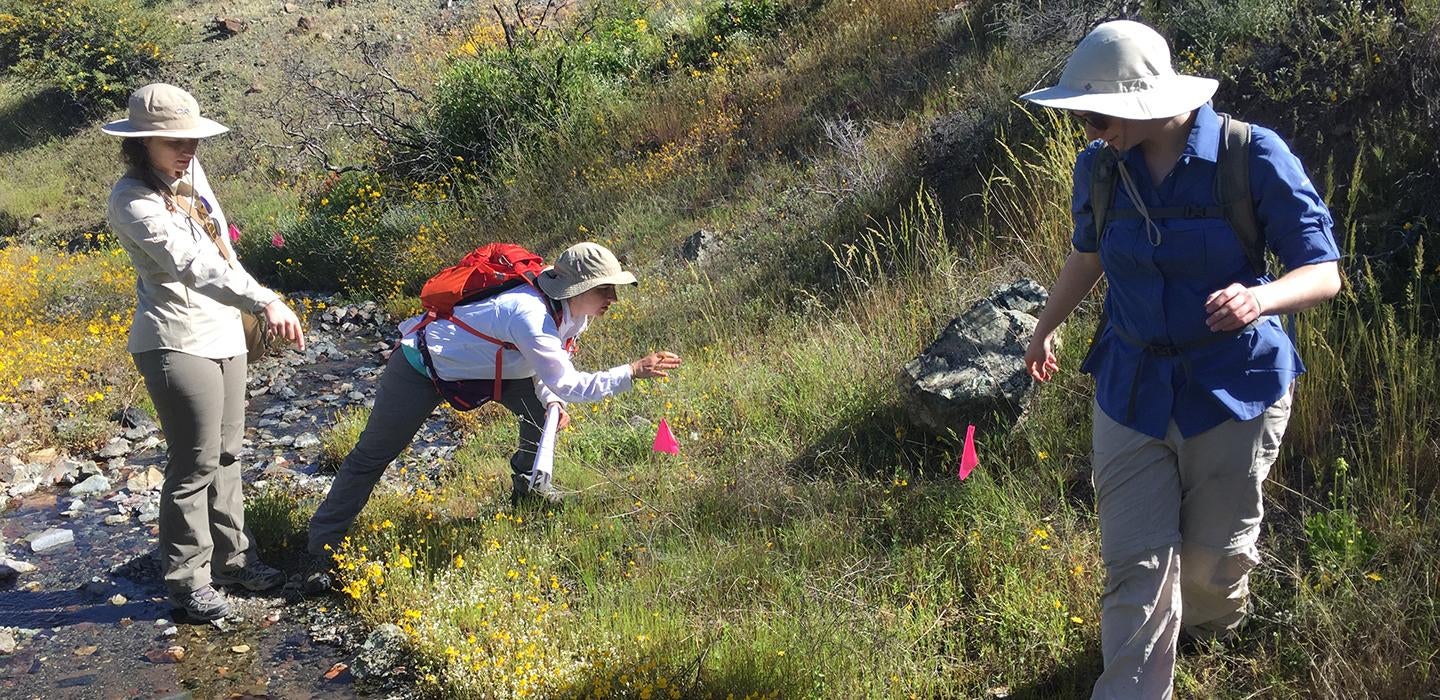
Subscribe to Pittwire Today
Get the most interesting and important stories from the University of Pittsburgh.Plants are constantly competing with their neighbors for resources, especially light, water and the attention of pollinators. But ambitious new research shows that pollinators may help rare plant species survive — and that the existence of more abundant plants may actually draw the attention of pollinators to their rarer neighbors.
“Pollination is a very messy process,” said study lead author Tia-Lynn Ashman, a distinguished professor of evolutionary ecology in the Department of Biological Sciences in the Kenneth P. Dietrich School of Arts and Sciences. “The ability to look at it as a community as diverse as this has never before been attempted.”
How numerous rare species coexist with abundant species, a major unresolved question in ecology, is essential to understanding how nature maintains diverse groups of species. “The primary idea we, as ecologists, are trying to understand is how species can coexist, especially when we are talking about biodiversity hotspots where lots of species live together,” Ashman said. “How it is possible that these locations can sustain that many different species without some of them going extinct?”
Ashman and her team spent five years addressing one aspect of that question: whether and how the interactions between plants and the animals that pollinate them could contribute to maintaining plant biodiversity. While pollination is just one of the resources that plants need, plant-pollinator interactions are thought to be among the most important drivers of biodiversity on Earth. About 4 in every 5 flowering plants requires visits by animal pollinators, without which they would suffer dramatic declines in seed production.
Funded by the National Science Foundation, the paper was authored entirely by a team of University of Pittsburgh researchers and was published on Sept. 8 in Nature. Other paper authors include Elizabeth M. O’Neill (A&S ’17), now a research technician in Ashman’s lab, and Rebecca A. Hayes (SHRS ’11, 18G), now at Oregon University.
The research team travelled to a biodiversity hotspot in California, where a Mediterranean climate and unique soils have produced a diverse community of flowering plants. During the study, the team observed flower visitation by a diverse set of pollinators, including 8,000 individuals across 400 different species, and tracked 3.1 million pollen grain movements among all 80 plants species present.
“We collected stigmas from all these flowers and looked at the characteristics of the pollen grains under a microscope so that we could reconstruct what took place during flowering,” said Ashman. “Finally, we were able to generate an entire network of interactions to understand how the pollen transfer was happening within the community.” It’s the first study to date to contrast multiple different ways that pollination could maintain diversity in plant communities.
The team’s results support the idea that plant-pollinator interactions favor rare species in communities where many different species flower simultaneously. In other words, pollinators can contribute to the maintenance of flowering plant diversity, a finding that underscores the importance of community-wide plant-pollinator interactions. One way this could occur is that plants might together be more attractive and bring more pollinators into the area than one plant on its own.
It’s a particularly salient finding, Ashman said, because pollinators are on the decline due in part to human impacts on the environment, including pesticides, climate change and urbanization. The results are yet another piece of evidence to show that protecting plants will mean protecting pollinators, too.


